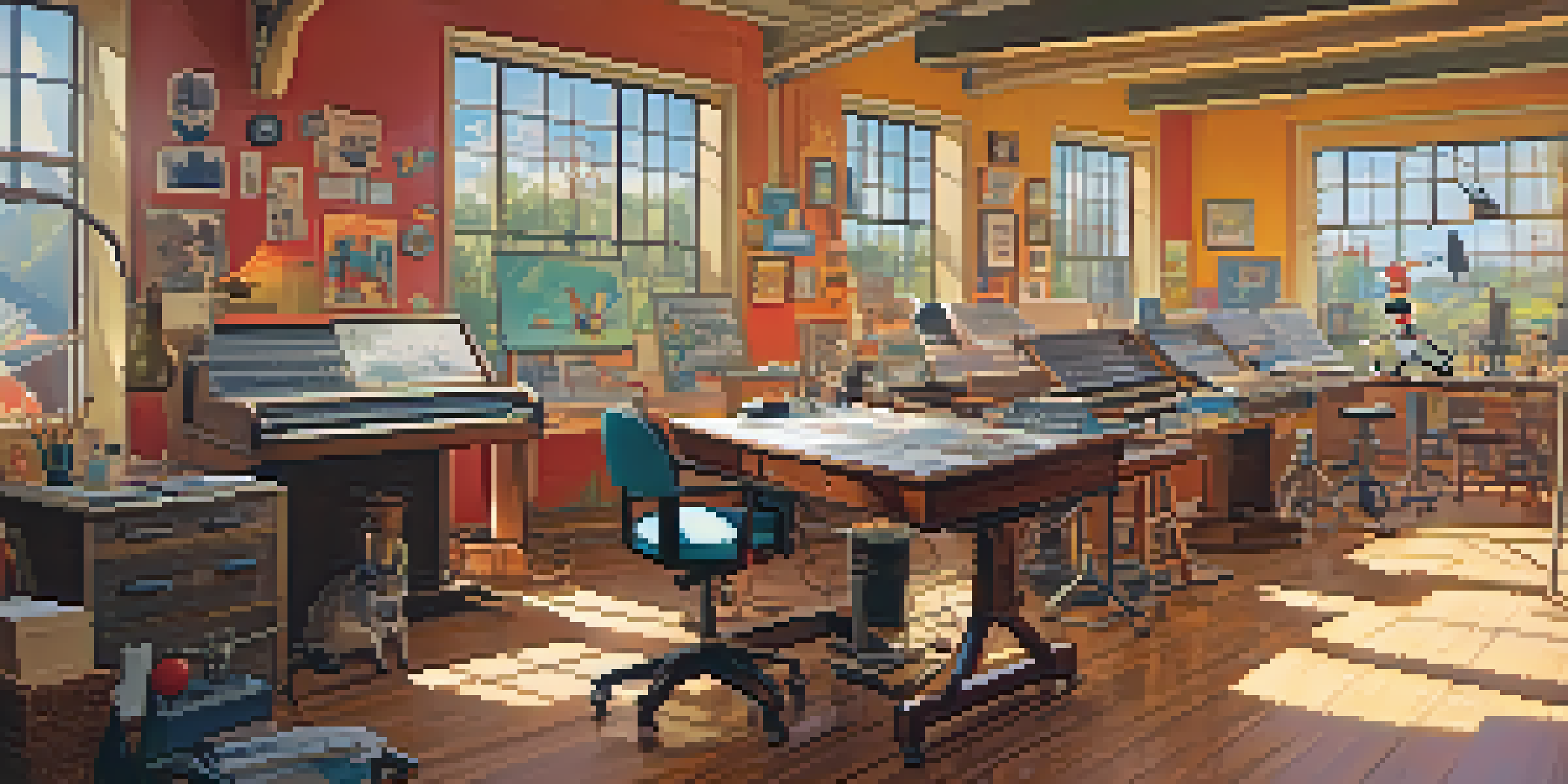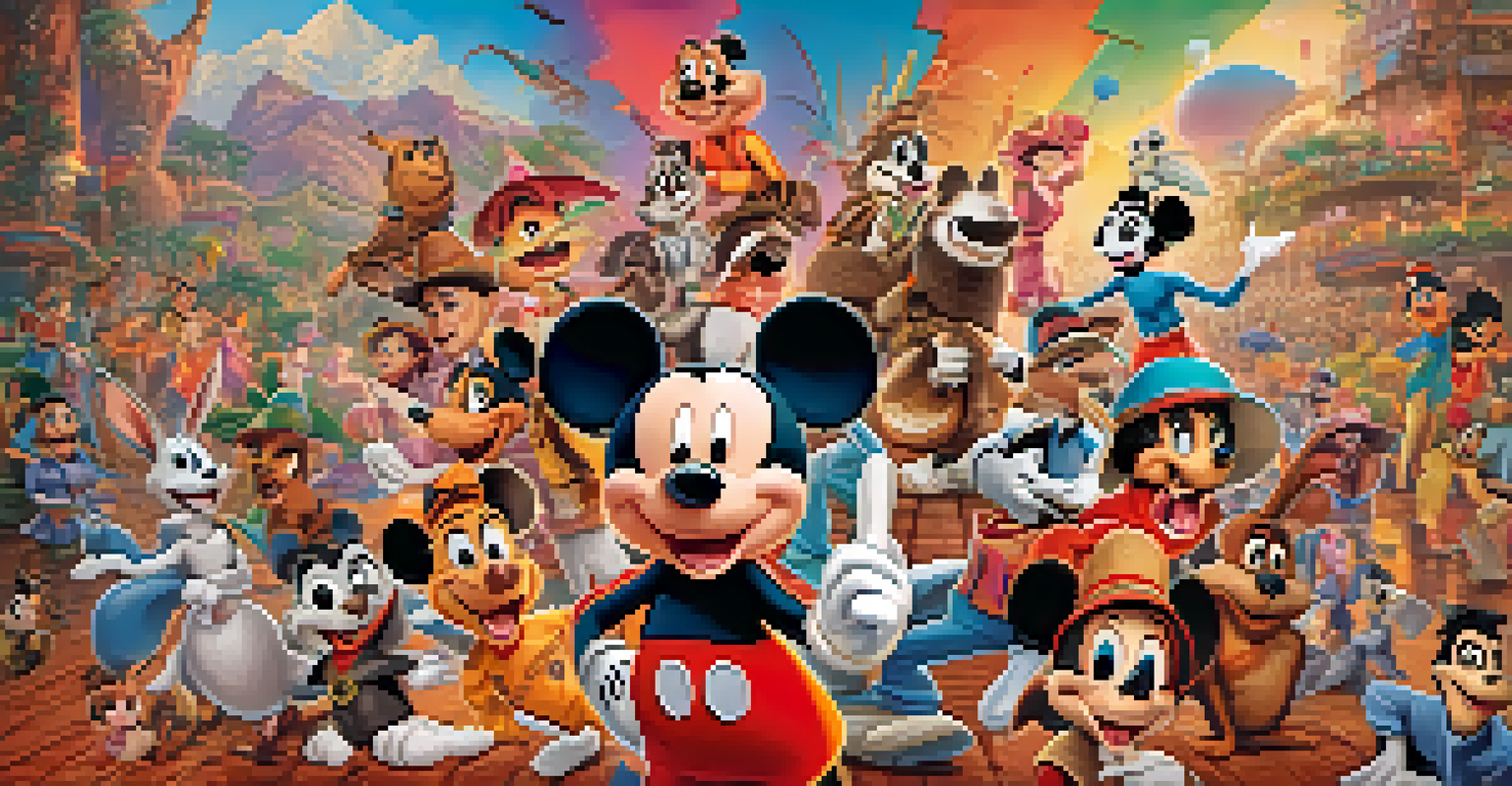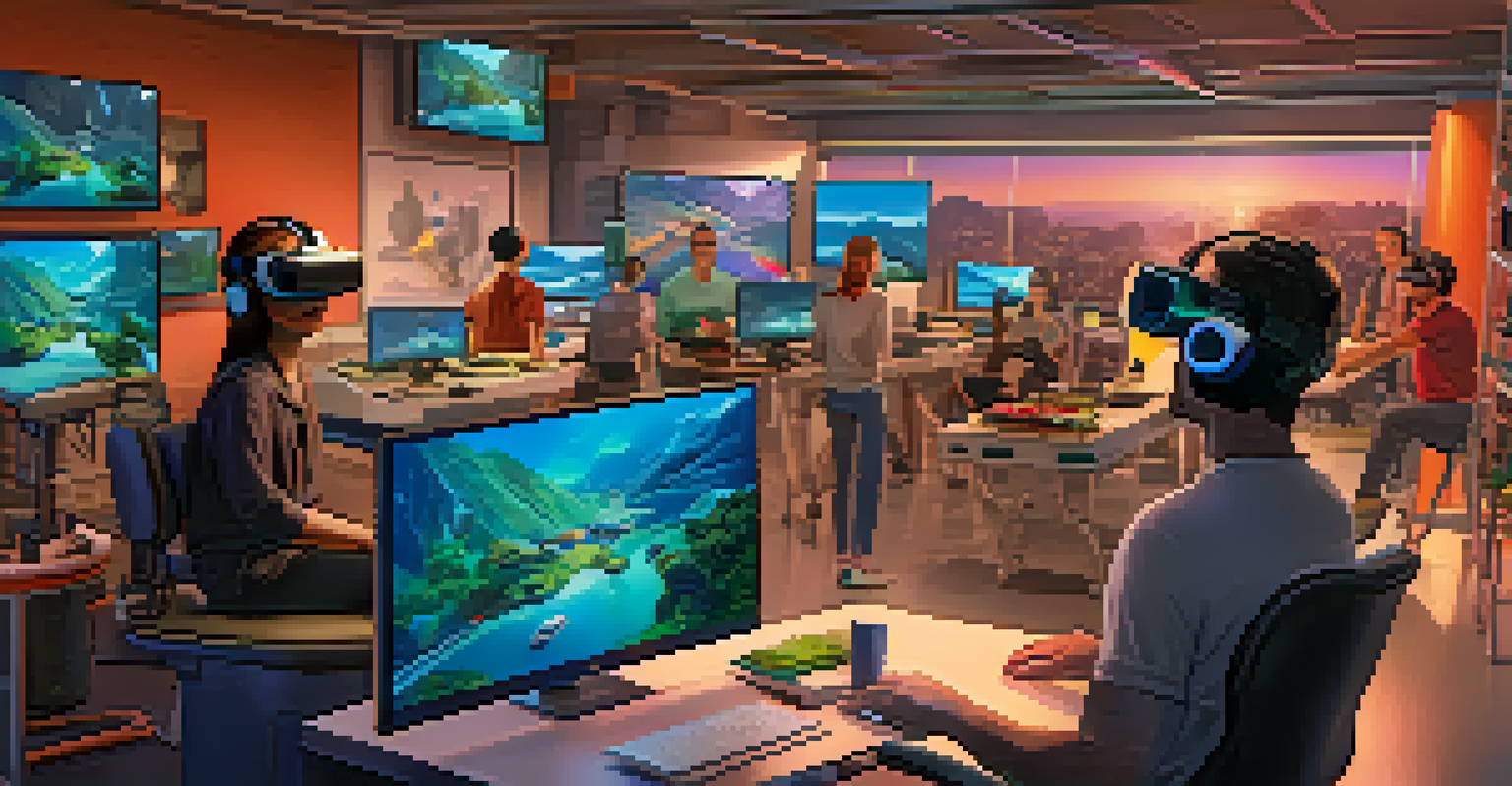Examining California's Contributions to Animation and Cartoons

The Birthplace of Animation: A Historical Perspective
California has long been the heart of animation, with its roots stretching back to the early 20th century. Pioneers like Walt Disney and his team began crafting beloved characters that would become cultural icons. The establishment of the Disney studio in Burbank marked a significant turning point, as the state became synonymous with animated storytelling.
Animation is not the art of drawings that move but the art of movements that are drawn.
As technology evolved, so did the animation industry in California, leading to the creation of groundbreaking films. The 1937 release of 'Snow White and the Seven Dwarfs' not only showcased Disney's innovative techniques but also set the stage for animated feature films as a legitimate art form. This success paved the way for a thriving industry that attracted talent from all over the world.
Today, California remains a hub for animation, with numerous studios and independent creators producing content for various platforms. The state's rich history continues to inspire new generations of animators, who build upon the legacy established by their predecessors.
The Golden Age of Animation: Iconic Characters and Stories
The Golden Age of Animation, spanning from the 1920s to the 1960s, saw the rise of iconic characters like Mickey Mouse, Bugs Bunny, and Popeye. These characters not only entertained audiences but also reflected the cultural zeitgeist of their time. California's animation studios expertly combined humor, music, and storytelling, creating memorable moments that resonated with viewers.

During this period, the art of animation evolved significantly, with advancements in techniques such as synchronized sound and color. Disney's introduction of Technicolor in 'Flowers and Trees' showcased the potential of animation as a vibrant medium. These innovations captivated audiences and encouraged studios to push the boundaries of creativity.
California: Animation's Heartbeat
California has been the epicenter of animation since the early 20th century, fostering innovations that shaped the industry.
The characters born during this era remain timeless, becoming symbols of American culture. Their influence can still be seen today, as modern animators draw inspiration from these beloved figures, ensuring that the legacy of California's Golden Age continues to thrive.
The Rise of Television Animation: A New Frontier
As television became a household staple in the mid-20th century, California's animation industry found new opportunities for growth. TV shows like 'The Flintstones' and 'Scooby-Doo' brought animation into living rooms across America, captivating audiences of all ages. This shift not only expanded the reach of animated content but also diversified storytelling techniques.
The stories we tell are the stories we live by, and we are all storytellers.
Studios began to experiment with shorter formats, leading to the creation of iconic series that would define children's programming. The flexibility of animation allowed for creative storytelling that could be both entertaining and educational. California's studios capitalized on this trend, producing countless series that would become beloved classics.
Today, television animation continues to thrive, with streaming platforms breathing new life into the genre. Modern shows like 'Rick and Morty' and 'Adventure Time' showcase the versatility of animation, appealing to a wide range of audiences while reflecting contemporary issues and humor.
The Influence of Video Games on Animation Styles
As video games gained popularity in the late 20th century, California's animation studios began to incorporate gaming techniques into their projects. The blend of animation and interactivity led to innovative storytelling methods that engaged audiences in new ways. Animators adapted their skills to create immersive experiences that blurred the lines between film and gaming.
California's vibrant gaming industry has produced visually stunning titles, setting high standards for animation quality. Games like 'The Legend of Zelda: Breath of the Wild' and 'Overwatch' showcase the artistry and creativity that animators bring to the table. This influence has pushed traditional animation studios to explore new styles and narrative techniques.
Diversity in Animation is Growing
There is a significant push for diversity and representation in animation, enriching storytelling and reflecting a broader range of experiences.
The cross-pollination of animation and gaming continues to evolve, with both industries learning from one another. As a result, audiences can expect to see even more groundbreaking projects that challenge the norms of storytelling and visual presentation.
Diversity and Representation in Animation: A Growing Focus
In recent years, the push for diversity and representation in animation has gained significant momentum in California. With voices from various backgrounds contributing to the industry, animation is becoming more inclusive and reflective of the world we live in. This shift not only enriches storytelling but also resonates with audiences seeking authentic representation.
Studios like Pixar and Disney have made strides in creating characters that represent a broader range of experiences. Films like 'Coco' and 'Raya and the Last Dragon' celebrate cultural heritage while introducing audiences to new perspectives. These stories not only entertain but also educate, fostering understanding and empathy.
As the animation landscape continues to evolve, the demand for diverse narratives will only grow. California's animation industry is at the forefront of this movement, paving the way for a more inclusive future that honors the rich tapestry of human experience.
The Role of Independent Animation: Innovation and Creativity
While major studios often dominate the animation landscape, California is also home to a thriving independent animation scene. Indie animators push creative boundaries, exploring unconventional themes and styles that challenge mainstream narratives. Their work often resonates with audiences seeking something fresh and different.
Festivals like the Annecy International Animation Film Festival showcase the talent and innovation coming from independent creators. These events provide a platform for emerging artists to share their unique visions, fostering a sense of community within the animation world. The recognition of indie animation has led to a growing appreciation for diverse storytelling methods.
The Future: VR and AI Transforming Animation
Emerging technologies like virtual reality and artificial intelligence are set to revolutionize how stories are told in animation, enhancing creativity and engagement.
As technology continues to evolve, independent animators have more access to tools and resources than ever before. This democratization of animation allows for new voices to emerge, enriching the industry and inspiring future generations of creators.
The Future of Animation: Trends and Innovations
Looking ahead, the future of animation in California is brimming with exciting possibilities. The rise of virtual reality (VR) and augmented reality (AR) is transforming how stories are told and experienced. Animators are now able to create immersive worlds that engage audiences like never before, merging the line between reality and imagination.
Moreover, the increasing use of artificial intelligence (AI) in animation is revolutionizing production processes. AI tools can assist in everything from character design to background animation, allowing artists to focus on storytelling and creativity. This technological advancement has the potential to streamline workflows and enhance artistic expression.

As these trends continue to develop, California's animation industry is poised to lead the charge into a new era. With a rich history of innovation and creativity, the state will undoubtedly remain a vital force in shaping the future of animation and cartoons.